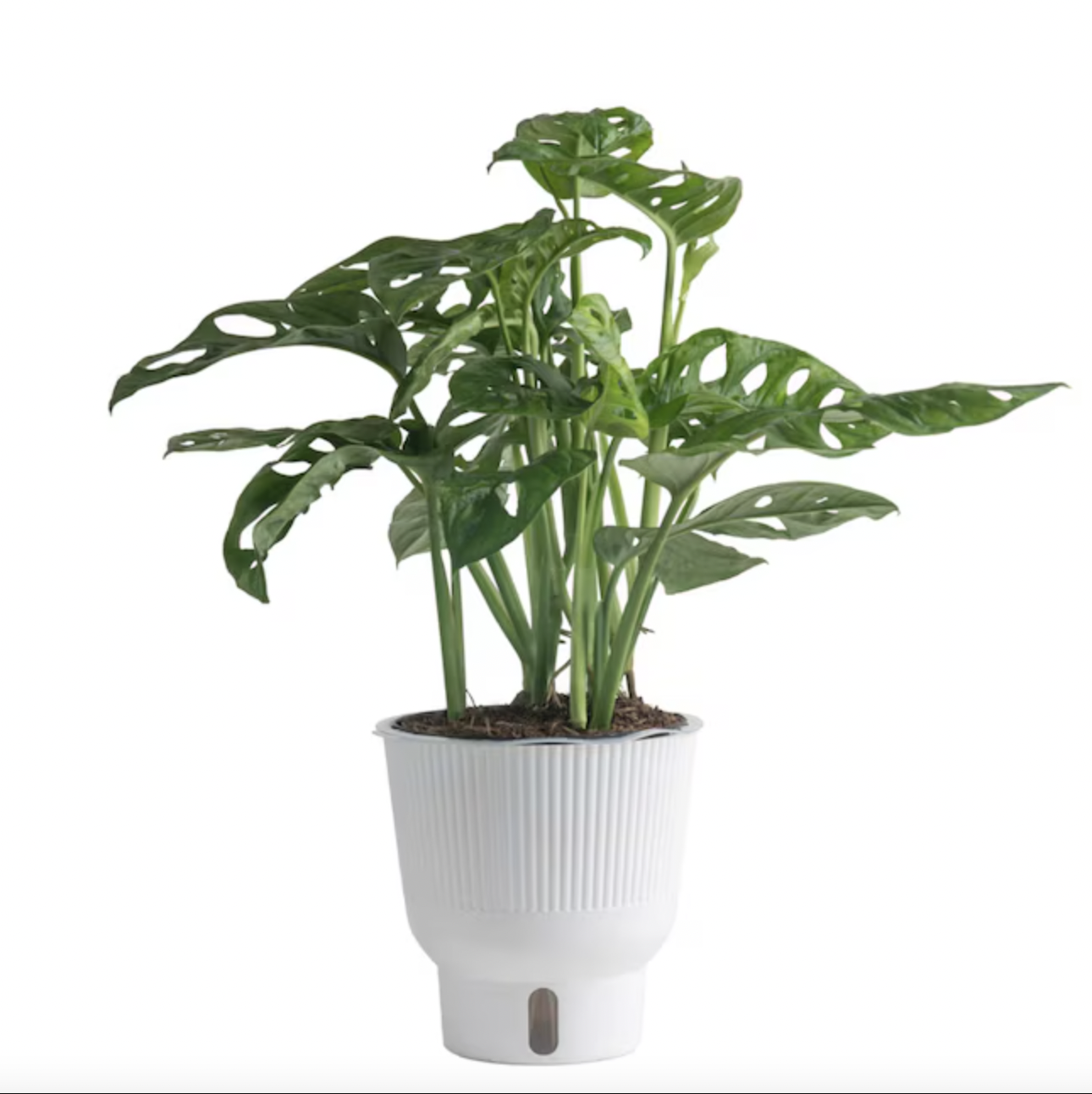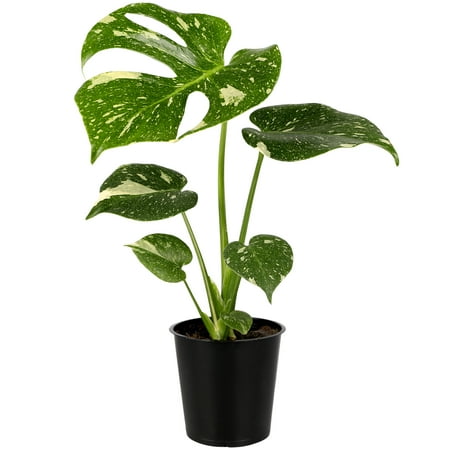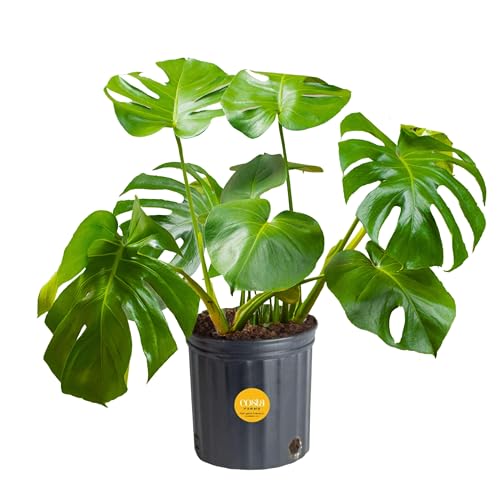My Monstera Plant Has Black Spots on Its Leaves — How Can I Get Rid of Them?
Dark patches on your Monstera plant might look ominous, but it's not a goner — just yet anyway. Here's what it could mean, and how to fix it


As far as houseplants go, the Monstera is a classic. This verdant, tropical climber has large, distinctive heart-shaped leaves with large perforations, earning it the unique nickname of the "Swiss Cheese" plant. However, they're such scene-stealers that when you have black spots on your Monstera leaves, everyone will tend to notice.
For the most part, Monstera plant care is pretty easy. This low-maintenance houseplant is tolerant of neglect and lower light levels, but if you notice any changes in the color of its leaves then it's time to act. In particular, if the foliage is plagued by black spots, it's time for some TL(P)C (that's "tender loving plant care" by the way).
There are various potential causes of dark patches on this plant, from easy mistakes like overwatering to more threatening culprits like pest infestations. The good news is, black spots on Monstera leaves can usually be fixed, and your plant's leaves can be restored to their former verdant glory in next to no time. To find out more, we spoke to some green-thumbed plant experts who warned us of four common causes of black spots on your Swiss Cheese plant.
1. Overwatering

When it comes to Monstera plant care mistakes, overwatering is one of the most common. While they're native to the topics, these popular houseplants only need watering when their soil dries out, so if you've been too attentive to your Monstera's thirst, you might notice dark spots or patches forming on its leaves.
"In my experience, black spots are usually because the soil is wet and the plant isn’t receiving adequate light, therefore it’s unable to metabolize the water it receives," says Lisa Price, owner of Root Houseplants. It's not the only color change to look out for, either, as overwatering can also be a reason why your Monstera leaves are turning yellow.
"The easiest way to get a sense of whether overwatering might be a problem is to feel the potting mix," says Justin Hancock, a horticulturist at Costa Farms. "If it feels really wet or saturated, especially for extended periods, the roots may be drowning. You can’t fix overwatering damage, but you can slow or prevent it by getting your watering on track."
Besides adjusting how often you water your Monstera, Lisa suggests positioning your plant in front of a window to help it dry out (but avoid direct sunlight). "Give it a good view of the sky, ensure the potting mix is well draining and that the pot has drainage holes, and check the moisture of the soil," she says. "Only water when 50% of the substrate has dried out."
The Livingetc newsletters are your inside source for what’s shaping interiors now - and what’s next. Discover trend forecasts, smart style ideas, and curated shopping inspiration that brings design to life. Subscribe today and stay ahead of the curve.

Justin has 25+ years in the industry, and is now based at Costa Farms. A plant enthusiast and educator, he has a degree in horticultural science and has worked in garden centers and botanical gardens, as a garden designer, and in garden publishing (including at Better Homes and Gardens). He has experience gardening across the country, from Minnesota to Oregon to Miami. Hancock is also co-host of the Costa Farms podcast Plant Rx.
2. Underwatering
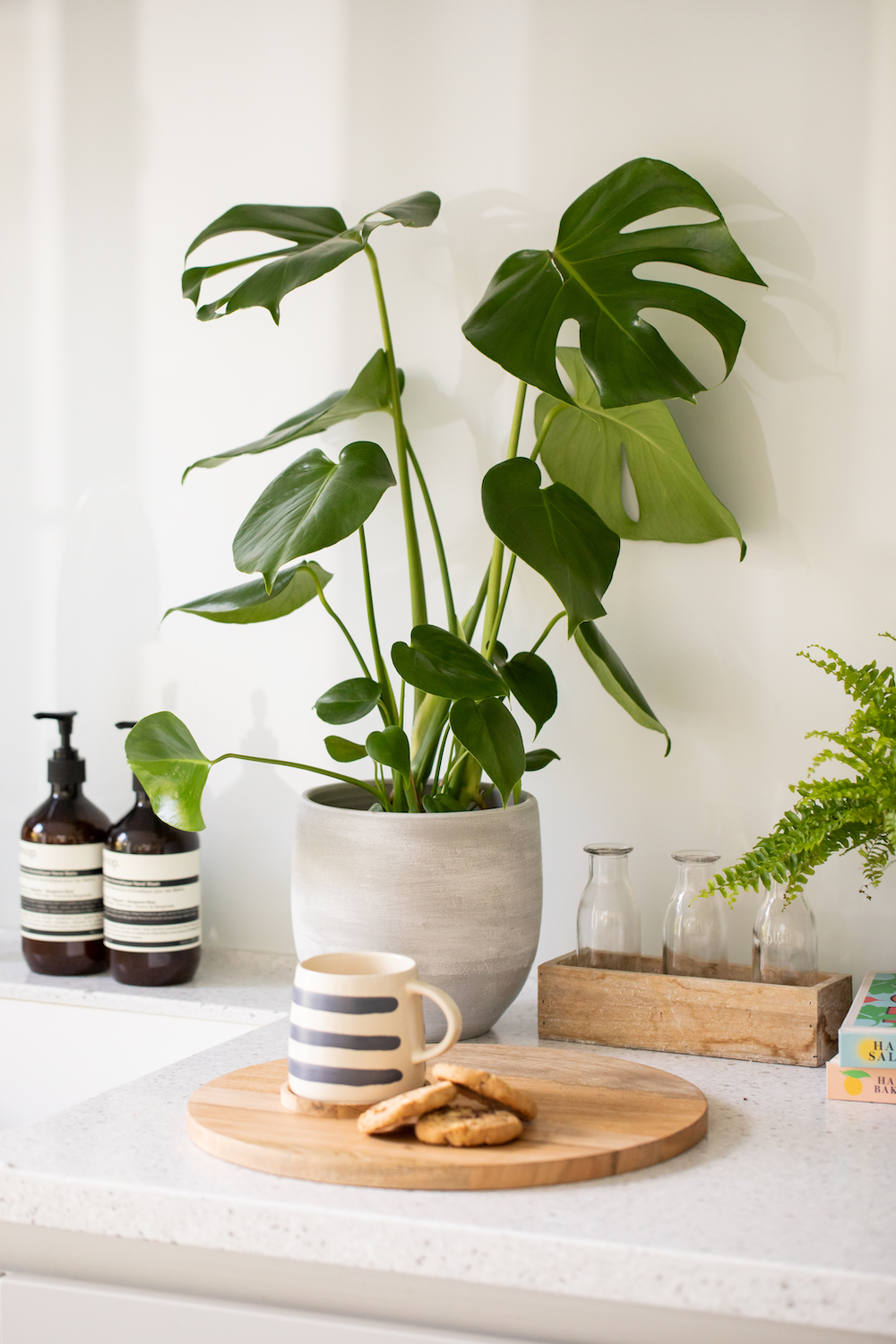
While not as common, underwatering can also be a cause of brown spots on your Monstera's leaves. Typically, these start on the edges of the leaf, turning them brown and crispy (this applies to all types of Monstera plants, from variegated varieties to those with extra fenestrated foliage like the Esqueleto Monstera).
To prevent further black spots, make sure you stick to a regular watering routine. Once or twice a week is usually ideal for most Monsteras, but make sure you take its size and placement into account.

Lisa is a self-taught plant enthusiast with a soft spot for Hoya and the owner of Root Houseplants in Liverpool, England. She loves reading about plants, furthering her knowledge and having the opportunity to share it with people she meets at her shop.
3. Fungal infection

"Some fungal diseases can attack a weakened plant, creating small black spots often ringed in yellow or brown," Justin explains. Fungal infections and overwatering often come hand-in-hand since they thrive in moist environments. As they feast on your plant's foliage, they'll leave dark spots in their wake. Be sure to check the underside of your Swiss Cheese's leaves regularly, too, as the spots might be more noticeable here.
"To prevent fungal diseases, ensure your plant is in good light and isn’t too wet or too dry," instructs Justin. "A happy, healthy plant resists disease better than a stressed one."
To treat fungal infections and reduce black spots, you can also use fungicides. Try Grower's Ally Fungicide Spray for Plants, available from Amazon, a treatment that can be used to control mildew, too. Taking measures to improve air circulation inside your room or around the plant can also help, but if dampness is a consistent problem, you might need to repot your Monstera as a last resort.
4. Pests
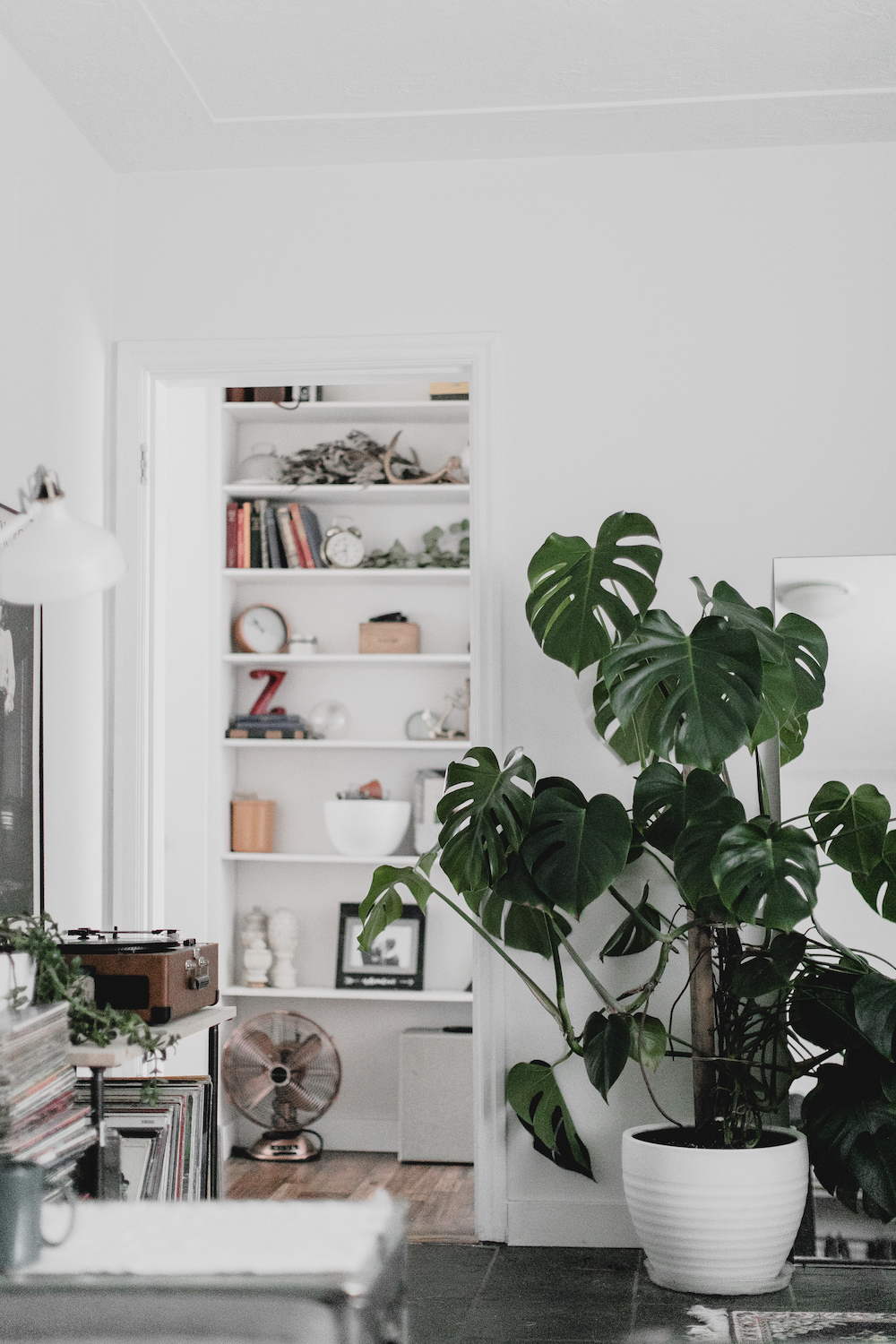
Common plant pests, such as spider mites and mealybugs, can also leave marks on your Monstera's leaves. The latter of these is more likely to result in brown spots. They appear as cottony white colonies on the leaves and stems of the plant and, as the tiny insects feed on the sap, they leave yellow marks that will eventually turn brown.
To prevent a pest invasion, regular leaf inspection is the best line of defense. Every time you water your plant, be sure to check its leaves (including the underside). If you notice any pests, clean your houseplant's leaves with rubbing alcohol to remove them, and follow up with a spritz of diluted neem oil (an organic pesticide) to keep them at bay. This Neem Organics Pure Neem Oil from Amazon should do the trick.
5. Cold damage

The Monstera plant is native to rainforests in the tropics, so it doesn't like extreme cold temperatures. "Cold damage can cause sections of the leaf to go black and limp and typically pop up when your plant is exposed to temperatures below about 35F," notes Justin. "Even brief periods — especially if they come on suddenly—can cause damage. The walk from a store to your car, for instance, if your plant isn’t protected in plastic."
Justin explains that there’s nothing you can do to fix cold damage, but it is relatively easy to prevent. If your Monstera is in a draughty spot, like near a door or a poorly insulated window, consider moving your houseplant during winter to keep it happy. Consistent temperatures will also improve your plant's overall health, helping it to resist the likes of fungal diseases.
6. Overfertilization
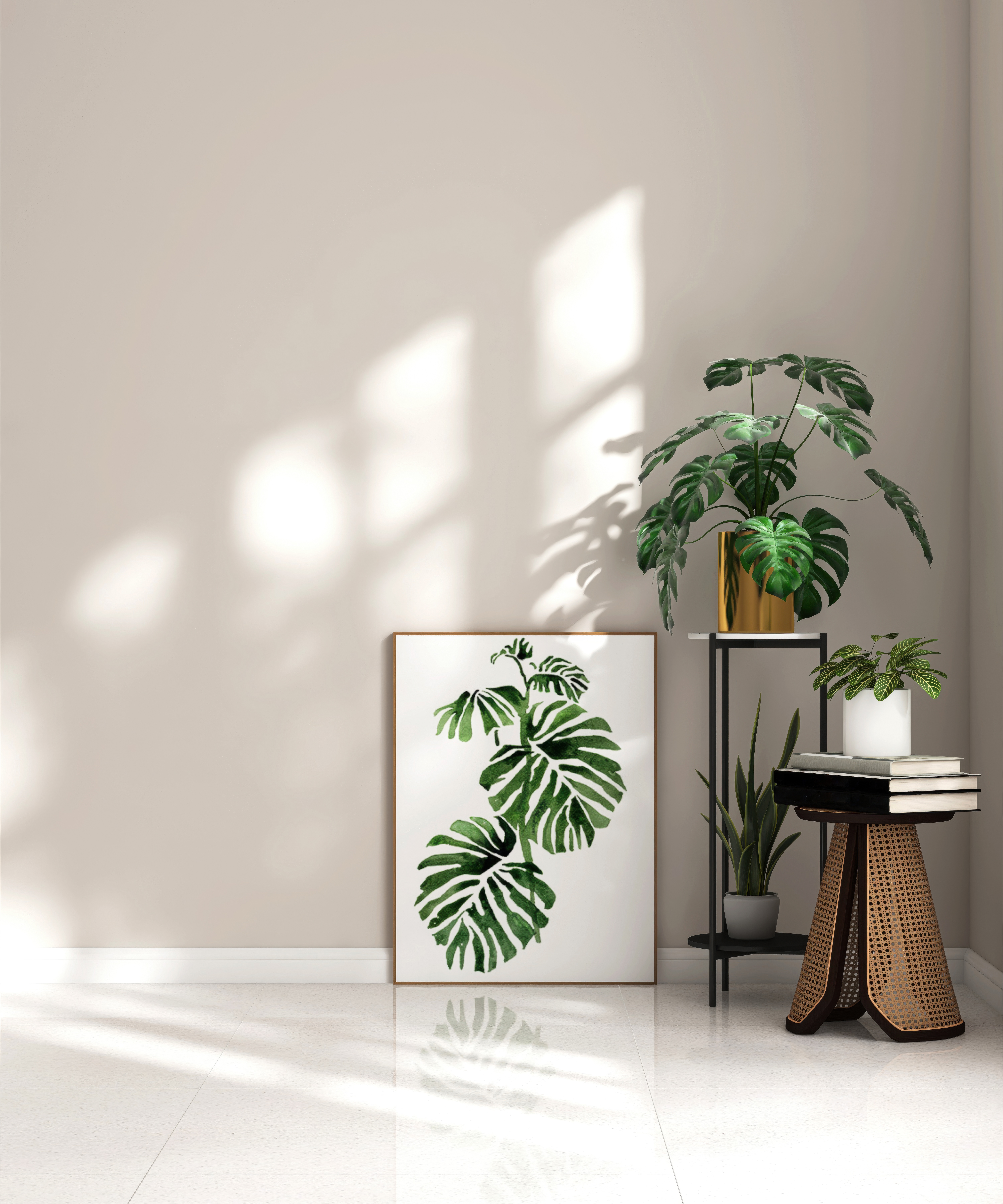
Finally, although a little fertilizer during spring and summer can help boost your Swiss Cheese's growth, you should be wary of overfertilizing. Justin notes that too much fertilizer will cause areas of your Monstera's leaves to die. "Most fertilizers contain nutrient salts," he says. "If a plant is over-fertilized (either too much fertilizer at once or too much fertilizer applied over time), the nutrient salts in the soil can burn the roots."
To treat these dark spots and minimize the risk of further discoloration, Justin recommends flushing the soil with lots of water to help bring the salt concentration back down to tolerable levels. You should also keep an eye out for other signs of an overfertilized houseplant such as loss of leaves or wilting foliage.
FAQs
Should I Cut Black Leaves Off a Monstera?
If a collection of dark spots has led to larger dark patches on your Monstera, it's a good idea to trim the affected leaves. "The black spots aren’t going to disappear so I would suggest trimming to improve the overall appearance of your plant," says Lisa. When pruning houseplants, it's usually best to cut at the base of the stem with a sharp pair of clean scissors or pruners (we like Fiskars Bypass Pruner Garden Tool, from Walmart).
This is especially important if you suspect a fungal infection or pest infestation. By cutting off the affected leaves, you can prevent disease from spreading to the rest of your plant. Removing the darker leaves will also help to redirect the plant's energy into the healthier foliage to help your plant recover and flourish.
While black spots on a Monstera can be a cause for concern, it's important to remember that not all is lost. You can usually remedy the problem by adjusting your watering regime, cleaning the leaves, and carrying out frequent inspections while your plant heals.
Treating darkened foliage is certainly a test of your plant parenting skills, but don't be discouraged by their presence. Follow the steps above to fix black spots and your Monstera plant will reward you with verdant foliage that flourishes throughout the seasons.

Lilith Hudson is a freelance writer and regular contributor to Livingetc. She holds an MA in Magazine Journalism from City, University of London, and has written for various titles including Homes & Gardens, House Beautiful, Advnture, the Saturday Times Magazine, Evening Standard, DJ Mag, Metro, and The Simple Things Magazine.
Prior to going freelance, Lilith was the News and Trends Editor at Livingetc. It was a role that helped her develop a keen eye for spotting all the latest micro-trends, interior hacks, and viral decor must-haves you need in your home. With a constant ear to the ground on the design scene, she's ahead of the curve when it comes to the latest color that's sweeping interiors or the hot new style to decorate our homes.
